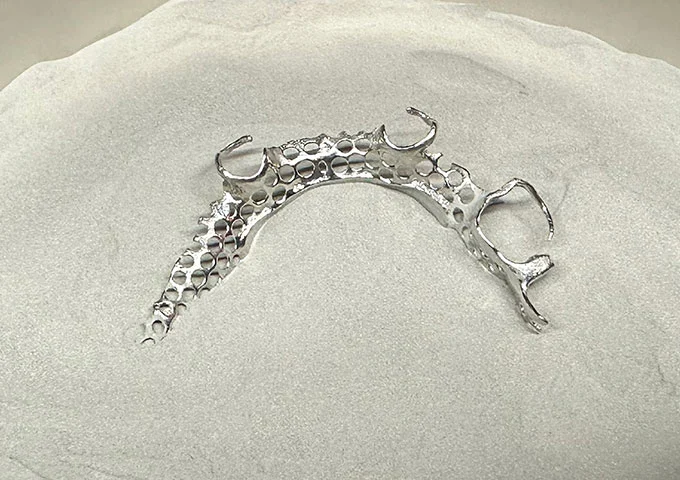Dental alloy materials can be classified based on the content of precious metals into precious metal alloys, semi-precious metal alloys, and non-precious metal alloys. They can also be categorized based on their use into type I, II, III, and IV alloy materials, or based on the primary elements in the alloy into gold-based alloys, silver-based alloys, palladium-based alloys, copper-based alloys, etc. Here, we will explain the global market application status of precious metal alloys, semi-precious metal alloys, and non-precious metal alloys.
According to the ISO 1562 standard, these alloys refer to those with a precious metal content ≥75wt%, including gold (Au) and platinum group elements (platinum, rhodium, palladium, iridium ruthenium, osmium). Due to their high precious metal content, these alloys have excellent biocompatibility, color, corrosion resistance, and castability. Among precious metal alloys, gold has the most extended history of use in dentistry. However, the use of gold has varied significantly, especially during the period from 1969 to 1984, due to dramatic changes in gold prices. In 1978, the dental gold usage in the United States, Japan, and Germany peaked at 24 tons, 14 tons, and 27 tons, respectively. However, as gold prices peaked at $850 per ounce in 1979, gold usage in dentistry fell sharply to 21 tons annually and 12 tons in the United States and Japan, respectively. Germany, however, was less affected due to special protective measures.
At that time, to reduce costs, new research trends in dental metal alloys emerged, substituting gold with palladium and silver to lower gold content in low-gold alloys, such as palladium-based alloys and silver alloys containing trace amounts of gold. Another type is non-precious metal alloys, such as cobalt-chromium and nickel-chromium alloys. However, because substitute alloys (including palladium alloys) continually presented issues such as corrosion, allergies, and other unsafe factors for the human body, advanced countries (such as Germany) still use precious metal alloys.

According to the ISO 8891 standard, these alloys have a precious metal content between 25wt%-75wt%, primarily aimed at reducing the content of gold, platinum, and other elements, substituting them with silver, copper, palladium, etc. The purpose is not only to reduce the cost of the alloy but also to maintain (or even enhance) the mechanical properties of the alloy, leading to their extensive use in clinical settings. Palladium-based dental alloys rapidly developed and increased in usage since 1979. The global palladium use in dentistry rose from 18.4 tons in 1980 to a peak of 42 tons in 1997. However, as the average annual price of palladium reached $680 per ounce in 2000 (even higher than the price of gold and platinum) and due to concerns in European countries regarding palladium-based alloys, the global use of palladium in dentistry gradually declined, with the 2008 usage dropping to around 20 tons. Currently, Japan and North America have the highest consumption of palladium in dentistry. Nevertheless, after Japan reduced its health insurance subsidies, the palladium usage in dentistry dropped to 8.6 tons in 2008 (accounting for about 43.7%). In North America, after the drop in palladium prices in 2000, usage began to rise slowly, with the 2008 dental palladium usage climbing to 8.4 tons. In Europe, usage decreased from a peak of 8.1 tons in 1997 to just 2 tons in 2008.
Because these alloys do not contain precious metal elements, they are low-cost and have been commonly used for a long time, particularly in developing countries. Major types include nickel-chromium alloys, cobalt-chromium alloys, and titanium alloys. Due to their cost advantage, these materials have gradually penetrated the dental market, quickly changing the market share of dental alloy materials and creating a situation of three co-existing forces: gold alloys, palladium-based alloys, and non-precious metal alloys. Although nickel-chromium and cobalt-chromium alloys have high melting points, low costs, and good mechanical properties, their biocompatibility is poor. The prostheses made from these materials often cause oral mucosa blackening, redness, swelling, allergies, and other symptoms. Currently, there is a consensus on the allergenicity and carcinogenicity of nickel and chromium. Considering these reasons, nickel-chromium and cobalt-chromium alloys are gradually being replaced by more suitable materials.
Riton 3D Printer Products
